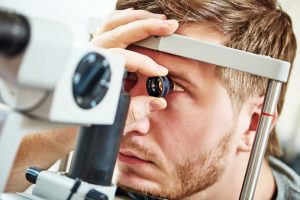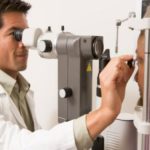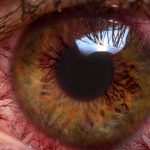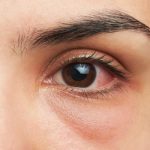 Glaucoma, according to WHO, is the second leading cause of blindness in the world, next to cataracts. An estimated three million Americans have glaucoma, but only half of them are aware of it.
Glaucoma, according to WHO, is the second leading cause of blindness in the world, next to cataracts. An estimated three million Americans have glaucoma, but only half of them are aware of it.
Everyone is at risk of developing glaucoma, from babies to older adults.
Advertisement
Glaucoma damages the eye’s optic nerve, leading to vision loss and blindness. Detecting and treating glaucoma earlier reduces the chances of severe vision loss.
Glaucoma vs. Cataract: Difference in Causes, Symptoms, and Treatment
While they are both degenerative eye diseases, glaucoma and cataract are different. Here we provide you with an overview of glaucoma vs. cataract.
Well over two million Americans currently suffer from glaucoma, and by the age of 80, over half of those living in the U.S experience cataract. What is the difference between glaucoma and cataracts? Glaucoma is an eye disorder that damages the optic nerve that carries information from the eye to the brain. In most cases, it relates to high pressure inside the eye. This is called “ocular hypertension.” It is important to know that there are some situations where intraocular pressure is normal, yet a person still gets glaucoma. Continue reading…
 Neovascular Glaucoma (NVG): Causes, Symptoms, and Treatment
Neovascular Glaucoma (NVG): Causes, Symptoms, and Treatment
Neovascular glaucoma (NVG) is a form of glaucoma in which new blood vessels close the angle of the eye. The angle of the eye is the angle between the iris and the cornea. The iris is the colored part of the eye and the cornea is the clear layer of cells covering the eye.
NVG is a rare condition that is most prevalent in elderly patients. The treatment for NVG is extremely difficult, but the condition is not life-threatening. Despite this, NVG is considered an emergency due to the possibility of complete blindness if left untreated. Continue reading…
 Acute angle closure glaucoma: Causes, symptoms, and treatment
Acute angle closure glaucoma: Causes, symptoms, and treatment
Acute angle-closure glaucoma is an emergency situation that requires immediate treatment. Quick recognition of the condition and immediate intervention can have a significant impact on patient outcomes and the progression of the disease.
Primary angle closure, primary angle-closure glaucoma, acute angle closure, and acute angle-closure glaucoma are often used interchangeably. However, the literature on the condition has been plagued by the lack of a uniform definition and specific diagnostic criteria.
Glaucoma is a leading cause of blindness if left untreated, and despite receiving treatment, about 10 percent will still lose their vision. Currently, there isn’t a cure for glaucoma, with treatment methods being focused on slowing its progression and controlling symptoms. Continue reading…
 Naturally occurring protein discovered that can help cure glaucoma
Naturally occurring protein discovered that can help cure glaucoma
Glaucoma is a leading cause of blindness if left untreated, and despite receiving treatment, about 10 percent will still lose their vision. Currently, there isn’t a cure for glaucoma, with current treatment methods focused on slowing its progression and controlling symptoms.
However, new research out of Macquarie University in Australia may have found a way to prevent glaucoma’s permanent loss of vision. They have discovered a naturally occurring protein in the body that protects the eye from the disease. Continue reading…
 Glaucoma linked with regular eye movements, not with intraocular pressure: Study
Glaucoma linked with regular eye movements, not with intraocular pressure: Study
Advertisement
Glaucoma can develop in people with normal intraocular pressure, suggests research carried out by the National Eye Institute. Findings of the study link glaucoma to strain caused by recurring yet unavoidable movements of the eye.
Doctors estimate that we move our eyes approximately 183,000 times in a day, which includes rapid eye movements during sleep. In fact, doctors suspect that it is the eye movements in our sleep-state that involve adduction—movement of the eyeballs towards the nose. These movements put a strain on our eyes.
This conclusion has been drawn by doctors based on two recently published studies in Investigative Ophthalmology and Visual Science as well as the Journal of Biomechanical Engineering. The former study shows how these movements put strain on the optic nerve while the latter suggests how the eye structures are affected by these movements. Continue reading…
